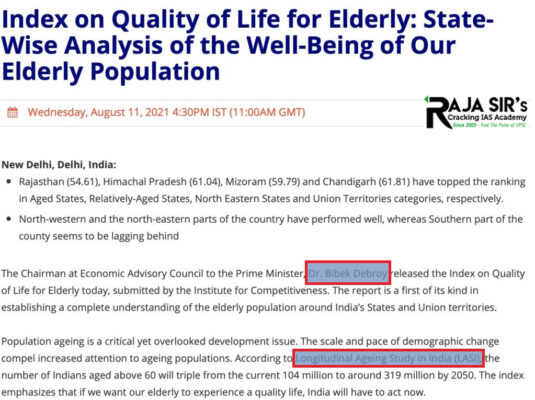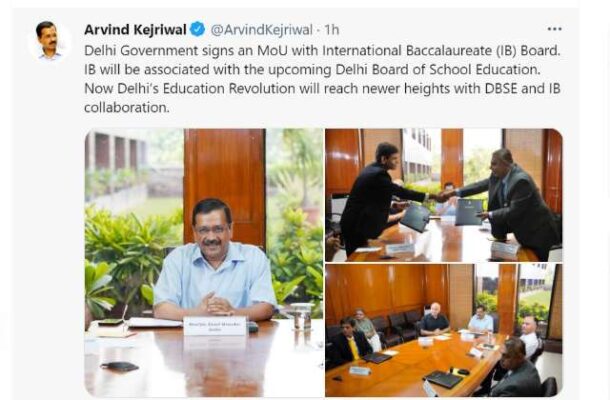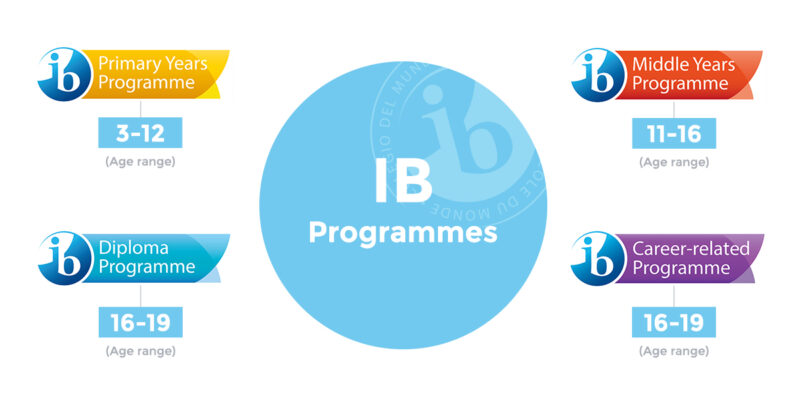- Home
- Prelims
- Mains
- Current Affairs
- Study Materials
- Test Series
13th Aug 2021
WHY NCPCR HAS RECOMMENDED THAT MINORITY SCHOOLS BE BROUGHT UNDER RTE
Recently, the National Commission for Protection of Child Rights (NCPCR) has released a report titled the “Impact of Exemption under Article 15 (5) with regards to Article 21A of the Constitution of India on Education of Children in Minority Communities”.
Highlights





- The report assesses that minority schools are exempt from implementing The Right to Education (RTE) policy and do not fall under the government’s Sarva Shiksha Abhiyan.
- The objective of the report was to assess the impact of this exemption of minority educational institutions from various guidelines that are mandatory for non-minority institutions.
- The Commission is of the view that the two different sets of rules i.e. Article 21A and Article 30 and Article 15 (5) are creating a conflicting picture between fundamental right of children and right of minority communities.
- The NCPCR started holding consultations with the students, teachers and communities in 2015-16.
- In 1992, India became a signatory to United Nations Convention on the Rights of the Child (UNCRC), a human rights initiative which set out the civil, political, economic, social, health and cultural rights of children.
- In 2002, the 86th Amendment to the Constitution provided the Right to Education as a fundamental right.
- The 86th Amendment inserted Article 21A, which made the RTE a fundamental right for children aged between six and 14 years.
- The passage of the amendment was followed by the launch of the Sarva Shiksha Abhiyan (SSA).
- It is a central government scheme implemented in partnership with the state governments that aimed to provide “useful and relevant, elementary education’’ to all children between six and 14 years.
- In 2006, the 93rd Constitution Amendment Act inserted Clause (5) in Article 15 which enabled the State to create special provisions, such as reservations for advancement of any backward classes of citizens like Scheduled Castes and Scheduled Tribes, in all aided or unaided educational institutes, except minority educational institutes.
- The government subsequently brought the Right to Education (RTE) Act, 2009, which centres around inclusive education for all, making it mandatory to include underprivileged children in schools.
- Section 12(1)(c) of the Act provided for 25 percent reservation of seats in unaided schools for admission of children from economically weaker sections and disadvantaged groups.
- Article 30 of the Constitution states the right of minorities to establish and administer educational institutions, with a view to provide opportunities to children from different religious and linguistic minority communities to have and conserve a distinct culture, script and language.
- The institutions imparting religious education were exempted from following the RTE Act through an amendment in 2012.
- The Supreme Court declared the RTE Act inapplicable to schools with minority status with the view that the Act should not interfere with the right of minorities to establish and administer institutions of their choice.
- Opposition parties had disrupted both Houses over the government’s unwillingness to allow discussion on the Pegasus snooping scandal, the farmers’ protests, and the rise in prices, especially of auto fuels.

- According to PRS Legislative Research data, the Monsoon Session was the third least productive Lok Sabha session of the last two decades, with a productivity of just 21 per cent.
- The Rajya Sabha logged a productivity of 28 per cent, its eighth least productive Session since 1999.
- According to PRS Legislative Research records since 1999, the worst Session in terms of productivity for both Houses was the Winter Session of 2010.
- According to PRS data, Lok Sabha took only 34 minutes on average to pass a Bill, while Rajya Sabha did it in 46 minutes.
- Rajya Sabha sat for 28 hours and 21 minutes against the scheduled time of 97 hours and 30 minutes, losing 76 hours and 26 minutes to interruptions.
- The dissatisfaction in Members of Parliament (MPs) is because of inadequate time for airing their grievances.
- The unresponsive attitude of the government and the retaliatory posture of the treasury benches lead to frequent disruptions.
- The political parties not adhering to parliamentary norms and disciplining their members and breaches the code of conduct.
- The absence of prompt action against disrupting MPs under the legislature’s rules also cause disruptions in Parliamentary Sessions.
- When a contentious issue crops up, the government dithers on debating it, leading to Opposition MPs violating the conduct rules and disrupting the proceedings of Parliament.
- There are lack of avenues for the Opposition to either force the government to convene a parliamentary session or set the agenda of Parliament.
- The time spent on discussion and passage of Bills came down drastically as the government did manage to push through a large volume of legislation.
- The successive governments have shied away from increasing the working days of Parliament.
- The conventional wisdom says it is the Opposition which gains because it can grand stand on issues to grab voter attention, not let crucial bills get passed and force the government to take action (or not) on certain issues.
- The speaker’s rulings are seen as biased and politically motivated because s/he does not resign from the party.
- There should be an increase in the working days of Parliament and our legislature should meet throughout the year, like parliaments of most developed democracies.
- In the United Kingdom, where Parliament meets over 100 days a year, opposition parties get 20 days on which they decide the agenda for discussion in Parliament.
- The main opposition party gets 17 days and the remaining three days are given to the second-largest opposition party.
- The decisions of the House should be passed on opposition days and are an opportunity for the opposing parties to focus national attention on issues that it deems crucial.
- There should be a deepening of Parliament’s role as the forum for deliberation on critical national issues.
- It is the only mechanism to ensure that disrupting its proceedings or allowing them to be disrupted ceases to be a viable option.
- The government may be forced to engage with the Opposition more if there is a rule for Parliament to sit for a minimum number of days in a year.
- The speaker also needs to ensure that certain rules regarding introduction and passage of bills are strictly followed in order to facilitate more effective participation by members.
- It is a unique initiative of the Ministry of Tribal Affairs in partnership with The Art of Living Foundation.
- Under the project, 1100 tribal women are creating Rakhis for Raksha Bandhan with seeds of indigenous trees, which is a unique contribution to increasing forest cover & combating climate change.
- It is part of project sanctioned by Ministry of Tribal Affairs to the Art of Living under which 10000 tribal farmers of 10 tribal villages in Aurangabad are being trained on sustainable natural farming based on Go-Adharith farming techniques.
- The 1100 members of the Mahila Kissan Manch germinated the idea of creating Rakhis with indigenous seeds.
- The Rakhis are made of indigenous seeds stuck on naturally dyed, soft indigenous, non-toxic, biodegradable cotton.
- It is based on Gauadharit Paramparagat Kheti which seeks to preserve and revive the Traditional Ecological Knowledge of tribal communities and protect them from the negative effects of chemical agriculture.

- It has been created by the Institute for Competitiveness at the request of EAC-PM.
- It identifies the regional patterns of ageing across Indian States and assesses the overall ageing situation in India.
- The Index framework includes four pillars: Financial Well-being, Social Well-being, Health System and Income Security.
- The eight sub-pillars are Economic Empowerment, Educational Attainment & Employment, Social Status, Physical Security, Basic Health, Psychological Wellbeing, Social Security and Enabling Environment.
- It measures the core domains of Economic, health, and social well-being of older people and provides the in-depth situation of elderly people in India.
- It sheds light on an issue often not mentioned- problems faced by the elderly.
- It presents a deeper insight into how well India is doing to support the well-being of its ageing population.
- It goes far beyond the adequacy of pensions and other forms of income support, which, though critical, often narrows policy thinking and debate about the needs of this age group.
- It highlights that the best way to improve the lives of the current and future generations of older people is by investing in health, education and employment for young people today.
- The Health System pillar observes the highest national average, 66.97 at an all-India level, followed by 62.34 in Social Well-being.
- Financial Well-being observes a score of 44.7, which is lowered by the low performance of 21 States across the Education Attainment & Employment pillar, which showcases scope for improvement.
- States have performed particularly worse in the Income Security pillar because over half of the States have a score below the national average, i.e. 33.03 in Income Security, which is the lowest across all pillars.
- Rajasthan and Himachal Pradesh are top-scoring regions in Aged and Relatively Aged States, respectively.
- Chandigarh and Mizoram are top-scoring regions in Union Territory and North-East States category.
- The Aged States refer to States with an elderly population of more than 5 million, whereas Relatively Aged States refer to States with an Elderly population of less than 5 million.
- Telangana and Gujarat are the worst-performing states in Aged and Relatively Aged States, respectively.
- Jammu & Kashmir and Arunachal Pradesh are the worst-performing states in Union Territory and North-East States category.
- The meeting in Virtual mode was hosted by the Election Commission of Bhutan.
- The delegations from Afghanistan, Bangladesh, Bhutan, Maldives, Nepal and Sri Lanka participated in the day-long meeting.
- The theme of FEMBoSA 2021 was ‘Use of Technology in Elections’.
- It was established at the first meeting of the representatives of Election Management Bodies of Bangladesh, Bhutan, India, Maldives, Nepal and Pakistan held in Dhaka, Bangladesh in the year 2010
- It is an active regional cooperation association of Election Management Bodies.
- It represents a very large part of the democratic world.
- Its logo with golden pearls stands for the eternal values of transparency, impartiality, democracy and cooperation.
- The member countries of the FEMBoSA are the Election Management Bodies of South Asia countries namely Afghanistan, Bangladesh, Bhutan, India, Maldives, Nepal, Pakistan and Sri Lanka.
- Member organizations celebrate National Voter's Day in a calendar year in their respective countries
- Initiative of establishing South Asia Institute for Democracy and Electoral Studies (SAIDES) in Nepal
- In order to increase knowledge related to elections, take initiatives to include voter education in the school-level textbooks of their respective countries
- Implementation of recommendations of South Asian Disabilities Organizations for the inclusion of disabled people in the electoral system and the creation of suitable election environment
- The initiative of establishing FEMBoSA Secretariat has been taken
- Promote contact among the Election Management Bodies of SAARC countries;
- Share experiences with a view to learning from each other; and
- Cooperate with one another in enhancing the capabilities of the Election Management Bodies towards conducting free and fair elections.
- The launch was supposed to place EOS-03, an earth observation satellite, into a geostationary orbit.
- The mission could not be accomplished as intended because the Cryogenic Upper Stage ignition did not happen due to technical anomaly.
- The cryogenic upper stage has an indigenously developed cryogenic engine fuelled by liquid hydrogen and liquid oxygen at very low temperatures.
- The cryogenic stage is supposed to be much more efficient and provides greater thrust to propel heavier rockets like GSLV that are designed to carry bigger payloads into space.

- It is a geo-imaging satellite for Earth Observation from Geostationary Orbit.
- The technology is developed by the Indian Space Research Organisation (ISRO) and it consists of capabilities including:
- Imaging the whole country 4-5 times daily
- In addition to natural disasters, EOS-03 would also enable monitoring of water bodies, crops, vegetation condition, forest cover changes etc.
- It would enable near-real time monitoring of natural disasters like floods & cyclones.
- It is capable of launching four-tonne satellites in the Geosynchronous Transfer Orbit (GTO).
- It is also capable of placing up to eight tonnes in a Low Earth Orbit (LEO), enough to carry a manned module.
- It is India’s first fully functional rocket to be tested with a cryogenic engine that uses liquid propellants i.e. liquid oxygen and liquid hydrogen.
- The 640-tonne rocket, equal to the weight of 200 fully-grown Asian elephants, is the country’s heaviest but shortest rocket with a height of 43 metre.
- It is a three-stage vehicle with two solid motor strap-ons (S200), a liquid propellant core stage (L110) and a cryogenic stage (C-25).

- The IB will be a knowledge partner to DBSE which is the first ever school board of Delhi set up in March 2021.
- The collaboration with IB will ensure revolutionary changes in the field of school education in the national capital.
- A team of experts will visit the schools associated with DBSE and it would assist the teachers to improve the standard of education.
- In July 2021, the Delhi government had announced that 30 of its schools will be affiliated to DBSE for the first academic session (2021-22).
- Currently, 193 schools in India are affiliated to the IB board, all of which are private schools.

- It is formerly known as the International Baccalaureate Organization (IBO) founded in 1968.
- It is a non-profit foundation offering educational programmes.
- It is headquartered in Geneva, Switzerland.
- It offers four educational programmes:
- the IB Diploma Programme and the IB Career-related Programme for students aged 15 to 19;
- the IB Middle Years Programme for students aged 11 to 16; and
- the IB Primary Years Programme for children aged 3 to 12
- It focuses on fostering critical thinking and building problem-solving skills, while encouraging diversity, international mindedness, curiosity, and a healthy appetite for learning and excellence.
- It provides students distinct advantages as they enter a world where asking the right questions is as important as discovering answers.
- The district, regional and national bodies can work with the IB to recognize IB programmes as part of their curricula.
- The implementation of access to IB programmes can provide the following benefits:
- Access to several creative choices for educating students.
- Acknowledgment as an international leader in education.
- Access to IB recognition subject matter experts and professional development opportunities.
- The opportunity to build relationships with other countries that recognize the IB.
- It encourages governments and universities to define policies that detail how an IB education relates to the national system of education and is treated for admission, credit and placement at universities and colleges.
- The research shows that students in the IB Primary Years Programme (PYP) and Middle Years Programme (MYP) performed better than non-IB students in a global International Schools’ Assessment study that ran from 2009-2011.
- IB teachers are given access to:
- high quality professional development that encourages critical thinking, self-reflection and dedication to lifelong learning and continuous improvement
- innovative and diverse education frameworks, unit planners, teaching resources and evaluation tools
- certification and degree programmes offered by highly respected universities worldwide
- a pedagogy known to produce students who are motivated to continue inquiry and lifelong learning, beyond school study.









 Latest News
Latest News
 General Studies
General Studies